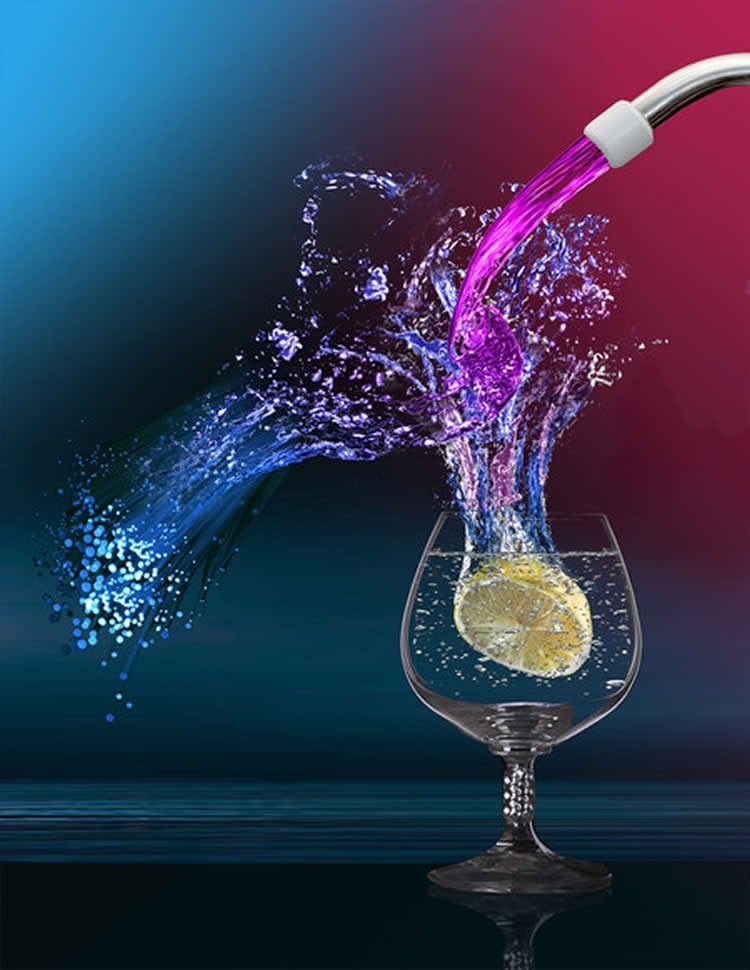Summary: Sour sensing taste cells play an important role in detecting water on the tongue, researchers say.
Source: CalTech.
Sour-sensing taste pathway also mediates water detection in mammalian tongue.
New research from Caltech shows that sour-sensing taste cells play an important role in detecting water on the tongue.
The work, appearing in a paper in the May 29 issue of the journal Nature Neuroscience, was done in the laboratory of Yuki Oka, assistant professor of biology.
“The tongue can detect various key nutrient factors, called tastants— such as sodium, sugar, and amino acids—through taste,” says Oka. “However, how we sense water in the mouth was unknown. Many insect species are known to ‘taste’ water, so we imagined that mammals also might have a machinery in the taste system for water detection.”
Taste cells relay information about tastants to the brain via nerves called the taste nerves. First author and graduate student Dhruv Zocchi measured the electrical responses from taste nerves in mice to various tastants as well as to water. The nerves responded in predictable ways to different basic tastes—sweet, sour, bitter, salty, and umami—but they were also stimulated by pure water. “This was exciting because it implied that some taste cells are capable of detecting water,” Zocchi says.
Each basic taste is mediated by distinct subsets of taste cells. In order to test which taste cells respond to water, the team genetically and pharmacologically blocked the function of individual cell populations. For example, when the salt taste receptor was blocked, salt no longer triggered activity in taste nerves, but responses to other tastes were not affected. “To our surprise, when we silenced sour taste cells, water responses were also completely blocked,” Oka says. “The results suggested that water is sensed through sour taste cells.”
To prove that the sour cells indeed contribute to water detection, the team used a technique called optogenetics that allowed them to stimulate sour cells with light instead of water. The researchers removed water from the animals’ water bottle and made it so that the bottle’s spout emitted a blue light when the animals touched it. They discovered that thirsty genetically engineered mice would go to the spout for water, encounter the light, and “drink” it. Though the mice were not rehydrated, they kept licking the water source because the light created a sensory cue of water.
A sour taste is often associated with an unpleasant taste quality that reduces animals’ preference toward fluid—for example, mice avoid drinking lemon juice. Interestingly, when the team stimulated sour cells with light, they did not observe that kind of aversive behavior in the engineered mice.

“These results raise the question: What information about taste are sour cells really relaying to the brain?” Zocchi says. “Maybe sour cells are not directly linked to the unpleasant sourness that we perceive, but instead they may induce a different type of taste, like water, when stimulated.”
“It’s important to note that stimulation of these cells does not alleviate thirst,” says Oka. “But this finding helps us understand how the brain interprets water signals under normal and thirsty states. Next, we would like to tackle the mechanisms by which the hedonic value or ‘pleasantness’ of sensory inputs are regulated by brain activity.”
Funding: Funding was provided by startup funds from the president and provost of Caltech and Caltech’s Division of Biology and Biological Engineering, the Searle Scholars Program, the Edward Mallinckrodt, Jr. Foundation, the Okawa Foundation, the McKnight Foundation, and the Klingenstein-Simons Fellowship Award.
Source: Lori Dajose – CalTech
Image Source: NeuroscienceNews.com image is credited to Oka Laboratory/Caltech.
Original Research: Abstract for “The cellular mechanism for water detection in the mammalian taste system” by Dhruv Zocchi, Gunther Wennemuth & Yuki Oka in Nature Neuroscience. Published online May 29 2017 doi:10.1038/nn.4575
[cbtabs][cbtab title=”MLA”]CalTech “Sour Taste Can Detect Water.” NeuroscienceNews. NeuroscienceNews, 31 May 2017.
<https://neurosciencenews.com/water-sour-taste-6808/>.[/cbtab][cbtab title=”APA”]CalTech (2017, May 31). Sour Taste Can Detect Water. NeuroscienceNew. Retrieved May 31, 2017 from https://neurosciencenews.com/water-sour-taste-6808/[/cbtab][cbtab title=”Chicago”]CalTech “Sour Taste Can Detect Water.” https://neurosciencenews.com/water-sour-taste-6808/ (accessed May 31, 2017).[/cbtab][/cbtabs]
Abstract
The cellular mechanism for water detection in the mammalian taste system
Initiation of drinking behavior relies on both internal state and peripheral water detection. While central neural circuits regulating thirst have been well studied, it is still unclear how mammals recognize external water. Here we show that acid-sensing taste receptor cells (TRCs) that were previously suggested as the sour taste sensors also mediate taste responses to water. Genetic silencing of these TRCs abolished water-evoked responses in taste nerves. Optogenetic self-stimulation of acid-sensing TRCs in thirsty animals induced robust drinking responses toward light even without water. This behavior was only observed when animals were water-deprived but not under food- or salt-depleted conditions, indicating that the hedonic value of water-evoked responses is highly internal-state dependent. Conversely, thirsty animals lacking functional acid-sensing TRCs showed compromised discrimination between water and nonaqueous fluids. Taken together, this study revealed a function of mammalian acid-sensing TRCs that provide a cue for external water.
“The cellular mechanism for water detection in the mammalian taste system” by Dhruv Zocchi, Gunther Wennemuth & Yuki Oka in Nature Neuroscience. Published online May 29 2017 doi:10.1038/nn.4575






